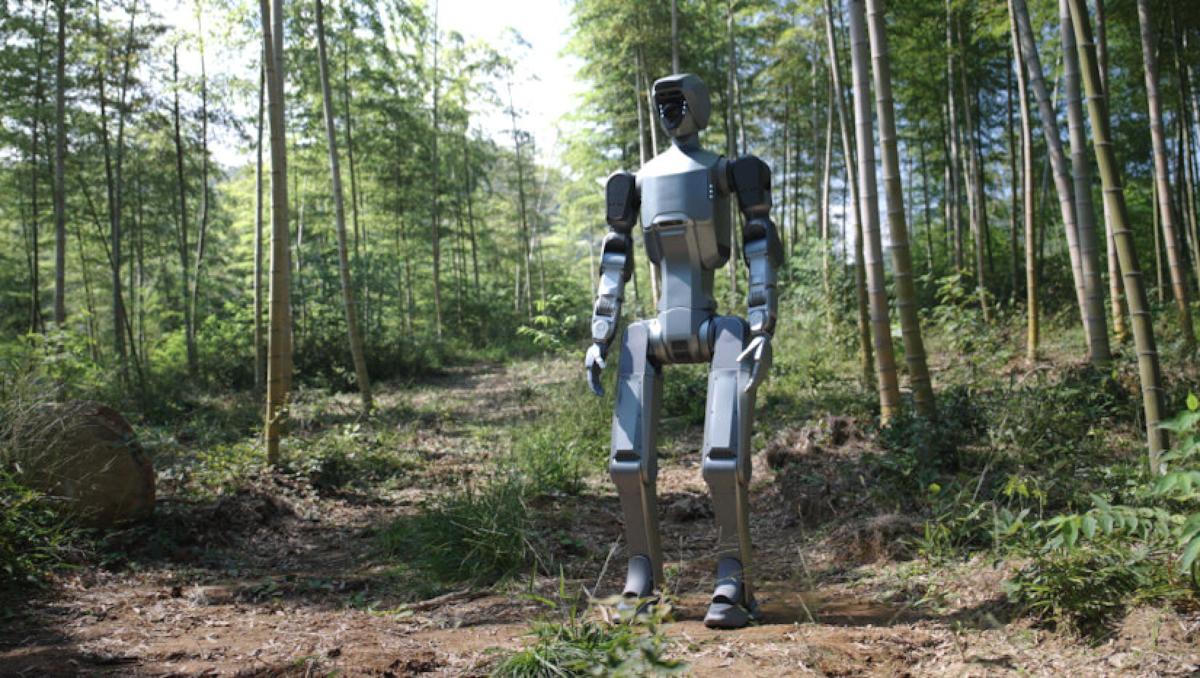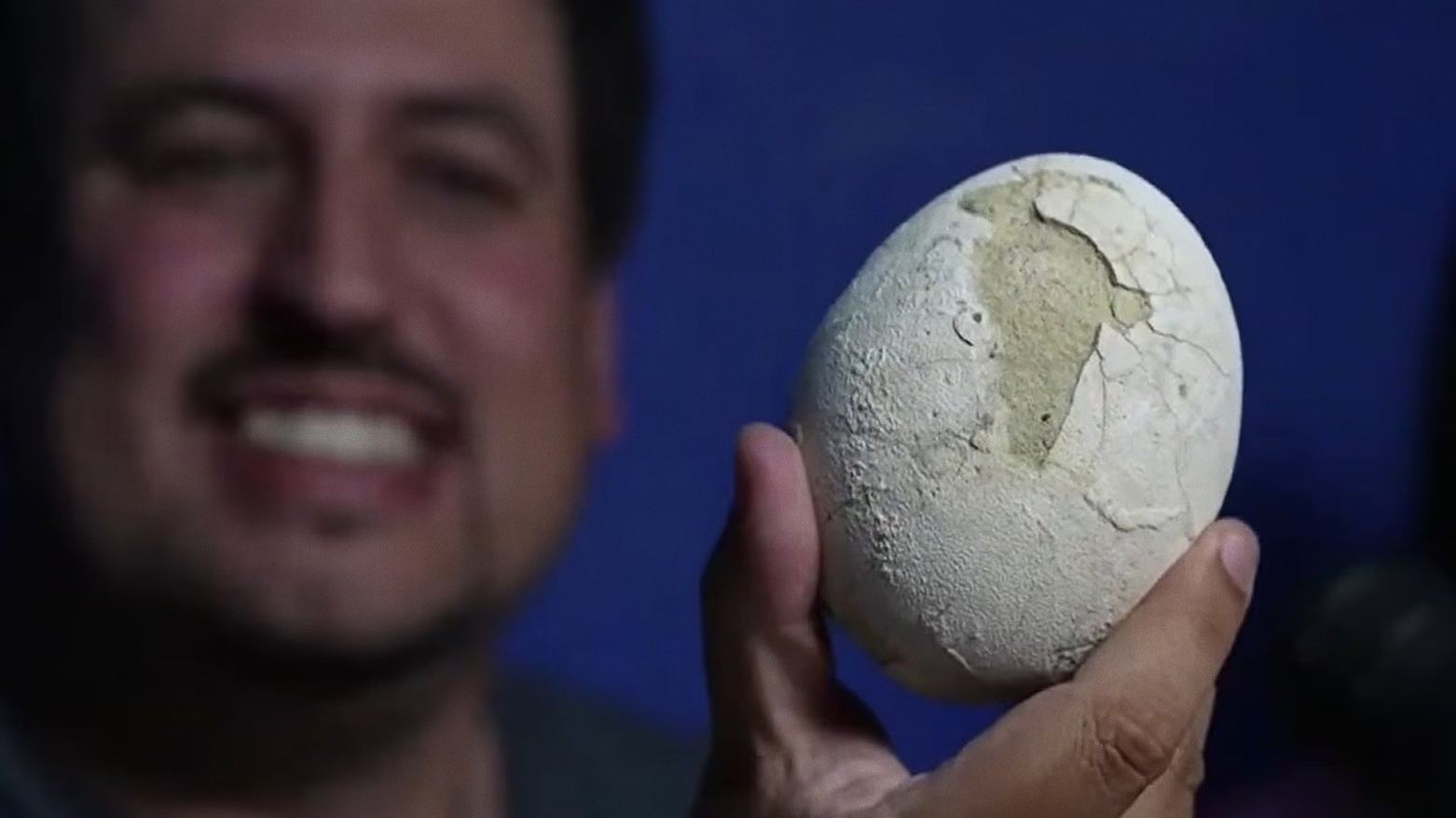Thousands of visitors have descended on Paisley for the town’s annual Halloween festival.
The event’s popular parade was the main spectacle of the night featuring popular characters from children’s books and films such as Harry Potter, Fantastic…

Thousands of visitors have descended on Paisley for the town’s annual Halloween festival.
The event’s popular parade was the main spectacle of the night featuring popular characters from children’s books and films such as Harry Potter, Fantastic…

Chronic obstructive pulmonary disease (COPD) ranks as the third leading cause of death globally, accounting for 3.23 million fatalities in 2019, surpassed only by ischemic heart disease and stroke.1 Projections from the Global…

Deep Robotics, a Hangzhou-based start-up, is facing a severe talent shortage, hindering its efforts to commercialise the results of its research and development, according to its chief technology officer (CTO).
Li Chao, who is also a co-founder of the robot maker, said at the Bund Summit Financial Forum in Shanghai on Friday that highly skilled professionals were very much needed to help Deep Robotics take its business forward.
He added that top talent in the algorithm area was in strong demand, which the company needed to fine-tune its humanoid robots to better serve clients.
Do you have questions about the biggest topics and trends from around the world? Get the answers with SCMP Knowledge, our new platform of curated content with explainers, FAQs, analyses and infographics brought to you by our award-winning team.
“Robots are [penetrating] every manufacturing sector,” Li said. “As a company, we must seize the opportunity to make our products not only usable but also reliable in some industrial scenarios.”
Deep Robotics has launched the DR02 industrial-grade robot capable of operating reliably under all weather conditions. Photo: Handout alt=Deep Robotics has launched the DR02 industrial-grade robot capable of operating reliably under all weather conditions. Photo: Handout>
Deep Robotics was founded by CEO Zhu Qiuguo in 2017, when he was an associate professor at Zhejiang University.
The company is part of an unofficial group of start-ups dubbed the “Six Little Dragons of Hangzhou”, alongside artificial intelligence developer DeepSeek, video game studio Game Science, brain-machine interface innovator BrainCo, 3D interior design software developer Manycore and robot maker Unitree Robotics.
The six firms are widely seen as future stars, boosting Beijing’s ambitions of building China into a global technology powerhouse.
DeepSeek’s breakthroughs in large-language models sparked a trillion-dollar global rout in Nvidia and US tech stocks in January. The firm’s two powerful AI models were built at a fraction of the cost and computing power used by foreign firms. But their performance proved to be on par with OpenAI’s GPT model.
“The ‘Little Dragons’ are the envy of the country’s tech industries and, technically, they can attract all kinds of talent because of their reputation,” said Ding Haifeng, a consultant at financial advisory firm Integrity in Shanghai. “Top start-ups are eager to accelerate the transition of their research into commercial applications. Consequently, they are actively chasing more qualified professionals to strengthen their overall capabilities.”

The coronavirus disease 2019 (COVID-19) was declared by the World Health Organization (WHO) as a pandemic on March 11, 2020. It poses a serious threat to human health and remains a major public health challenge worldwide.1 COVID-19…

At current prices, the looted gold is worth around $70 million. PHOTO: PIXABAY
Gold and silver prices increased on Saturday in both global and local markets after a six-day pause, driven by a rise in international bullion rates.
In the international bullion market, gold gained $18 per ounce, reaching $4,113. Following the global trend, the price of 24-carat gold in local markets rose by Rs1,800 per tola, bringing it to Rs433,662, while the price of 10 grams increased by Rs1,543 to Rs371,795.
Similarly, silver prices also rose, with the rate per tola increasing by Rs57 to Rs5,124, and 10 grams climbing by Rs49 to Rs4,393.
Read: SBP injects Rs4.25tr via OMOs
Traders attributed the increase to fluctuations in the global bullion market, which directly influenced domestic precious metal rates.
On Friday, gold prices continued their downward trajectory, mirroring trends in the international market, where the precious metal struggled to recover despite slightly softer-than-expected US inflation data that bolstered expectations of a Federal Reserve rate cut next week.
According to the rates issued by the All-Pakistan Gems and Jewellers Sarafa Association, the price of gold per tola fell by Rs2,000, settling at Rs431,862, while the price of 10 grams declined by Rs1,714 to Rs370,252.
Read more: Gold prices drop sharply in Pakistan following global decline
The fall marks the first weekly loss in nearly 10 weeks as global investors adjusted their positions ahead of next week’s US monetary policy announcement.
On Thursday, the yellow metal had already recorded a sharp drop of Rs3,500 per tola, bringing local prices down from recent highs.
The consistent downward pressure reflects international market sentiment, where gold has been trading in a narrow band after heavy profit-taking earlier in the week.

More like this:
• Why the year’s most acclaimed film flopped
• 12 of the best films to watch this October
• Why Lady Macbeth is a misunderstood villain
When Hedda landed on the London stage, also in 1891, that first UK production played a large…

Paleontologists in Argentina have discovered a perfectly preserved, 70-million-year-old carnivorous dinosaur egg, sparking hopes it may contain an embryo.
ERBIL (Kurdistan24) – A team of scientists in Argentina has unearthed…

The so-called London Underground mosquito was long thought to be an example of modern or observable evolution [Getty]
A mosquito long thought to have evolved in the tunnels of the London Underground actually originated more than a thousand…

Sedana Medical (OM:SEDANA) remains unprofitable, posting losses that have increased at 1% per year over the past five years. Looking ahead, the company is forecast to stay in the red for at least the next three years. Revenue is projected to grow by 26.45% per year, outpacing the broader Swedish market’s 3.9% expected annual growth. Investors are weighing this robust revenue outlook against the risk backdrop of continued losses and an uncertain path to profitability.
See our full analysis for Sedana Medical.
With the numbers in, the next section will compare Sedana Medical’s latest results to the key narratives shaping market sentiment. We will see where the data strengthens consensus and where it forces a rethink.
See what the community is saying about Sedana Medical
Sedana Medical’s future gross margin outlook benefits from operational improvements. Supply chain integration and steady gross margins already above 70% strengthen the case for margin progression as the business scales.
Analysts’ consensus view notes that sustainable margin expansion is tied to successfully entering the U.S. market. Positive pivotal trial data and FDA Fast Track Designation could open a market three times larger than its current core:
The company’s addressable patient pool grows if regulatory milestones are hit in the U.S. and pediatric indications expand within Europe.
Consensus sees market penetration and improved margins as achievable, but only if execution matches the ambitious entry and adoption plan for new geographies.
What is surprising is that despite the lack of accelerating profit growth so far, the clinical advantages and hospital investment trends identified in the consensus narrative are expected to maintain or lift margins further.
Sedana trades at a Price-to-Sales ratio of 5.4x, above its peer average of 2.9x but nearly identical to the Swedish Medical Equipment industry average of 5.5x. This shows that while it looks relatively expensive versus direct peers, its valuation closely mirrors the wider sector.
According to analysts’ consensus, this valuation profile places Sedana in line with industry momentum. Continued strong revenue growth could justify the premium if margin trends hold:
Analysts expect 23.3% annual revenue growth over the next three years, far surpassing the Swedish market’s 3.9% rate.
Even so, consensus argues that reaching fair value depends on both revenue delivery and eventual profitability, metrics not yet achieved as the company plans for U.S. launch and ongoing expansion.
The consensus outlook suggests that Sedana’s share price of 10.6 sits well below the analyst price target of 21.0. This reinforces how valuation tension is influenced by forward growth assumptions and execution risk.